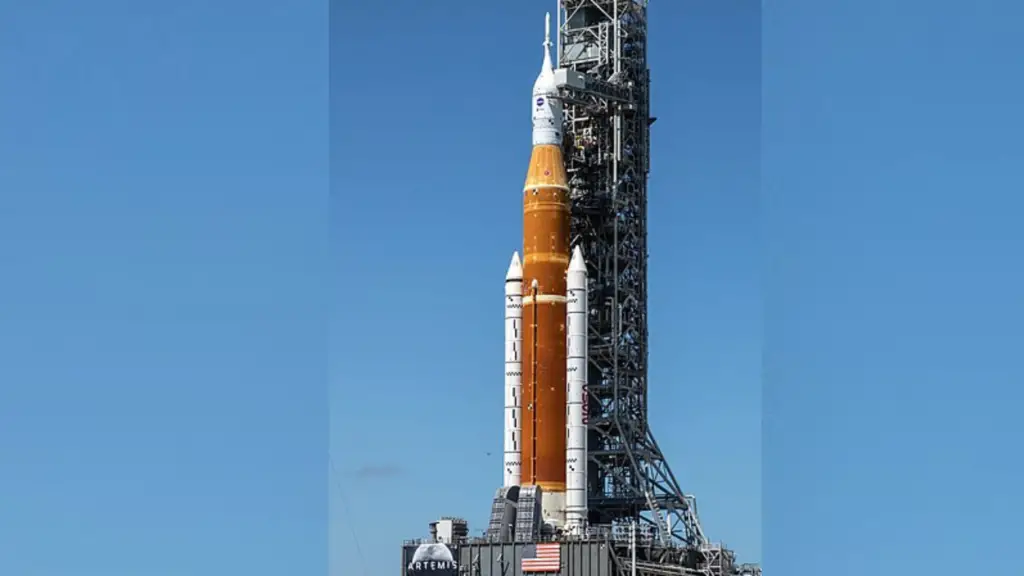After weeks of postponing the launch of the Artemis 1 moon rocket, NASA officials are looking at launching the megarocket to visit the moon by the mid of this month. During a media teleconference held on November 3, NASA officials announced that the American space agency is hoping to launch Artemis 1 moon rocket on November 14. Unlike the previous launch attempts, NASA’s officials are confident that the upcoming launch attempt will record a great success.
The Artemis 1 megarocket system consists of the massive Space Launch System (SLS) rocket stacked with the powerful Orion spacecraft, which will take the spaceflight around the moon’s orbit. NASA is looking at rolling out the megarocket to the Launch Pad 39B from NASA’s Vehicle Assembly Building (VAB) located at Kennedy Space Center (KSC) in Florida.
The massive rocket rollout is scheduled to commence on Friday (November 4) at 12:01 a.m. EDT (0401 GMT). Before now, the SLS rocket has been rolled to its launch pad on three different occasions, including during prelaunch fuel testing in March and June, and finally in mid-August for two failed launch attempts. After the first launch attempt failed on August 29, NASA officials did not roll back the rocket into the Vehicle Assembly Building.
However, after the second launch attempt failed on September 3, NASA officials has to roll the rocket back into VAB on September 27. Since then, troubleshooting and repair checks have been carried out on the rocket to ensure that the next launch attempt is successful. However, the technical setbacks encountered in the past have been resolved. During the November 3 teleconference, NASA officials announce the Artemis 1 new mission timeline to commence on November 14 at 12:07 a.m. EST (0507 GMT).
“If we weren’t confident, we wouldn’t roll out. If we weren’t confident, we wouldn’t start the countdown when we do so. We’re confident moving forward,” said Jim Free, associate administrator of the Exploration Systems Development Mission Directorate at NASA headquarters in Washington, D.C. Free is one of the NASA officials that understands the challenges surrounding the Artemis 1 launch.
He further revealed to reporters that Artemis 1 mission had remained a great challenge to NASA engineers and scientists from the beginning.
“I do want to reflect on the fact that this is a challenging mission,” Free announced to reporters. “We’ve seen challenges just getting all our systems to work together. And that’s why we do a flight test. It’s about going after the things that can’t be modeled. And we’re learning by taking more risks on this mission before we put crew on there. And those challenges, you know, come with this complex of a vehicle and where we’re flying and how we’re getting there. The good part in all this is our team continues to grow and learn about the vehicle.”
How NASA Artemis 1 Team Resolved the Fault that Stopped the Previous Launch Attempt
After the Artemis 1 rocket was rolled back to VAB on September 27, NASA engineers have been working on it to troubleshoot and repair any fault that could possibly stop the success of the next launch attempt. For the past five weeks, this team of engineers replaced SLS flight termination system hardware, and payload batteries, recharging Orion’s Batteries and performing other complex tasks on the megarocket system.
“Since rolling back to the VAB for Hurricane Ian, the team has been hard at work,” said Cliff Lanham, senior vehicle operations manager of the Exploration Ground Systems Program at KSC. “The work in the VAB has gone smoothly, and we’ve been able to protect the rocket from the hurricane, and we’ve been able to get into our inspections and make repairs. We started retracting our platforms. We’re actually retracting our final platform now. And the crawler transporter is now in the high bay underneath the mobile launcher.”
Based on the announcement made by NASA officials, the world can see their confidence in recording success during the next launch attempt. NASA plans to send uncrewed Orion spacecraft on a space trip to visit the lunar orbit and return back to earth during the Artemis 1 mission.
The outcome of this mission will determine when the American Space Agency will proceed with its crewed mission during the Artemis 2 mission, during which astronauts will conduct a flyby mission around the moon. NASA is looking at landing astronauts on the lunar surface during the Artemis 3 mission which was scheduled to launch in2025 or 2026. With the effort made so far, the Artemis Space Program may likely open the door to the moon and mars colonization in the future.





I’m 75 and feel the excitement of this mission ! Wishing all the team , from Broom to Elon every success 🙌!